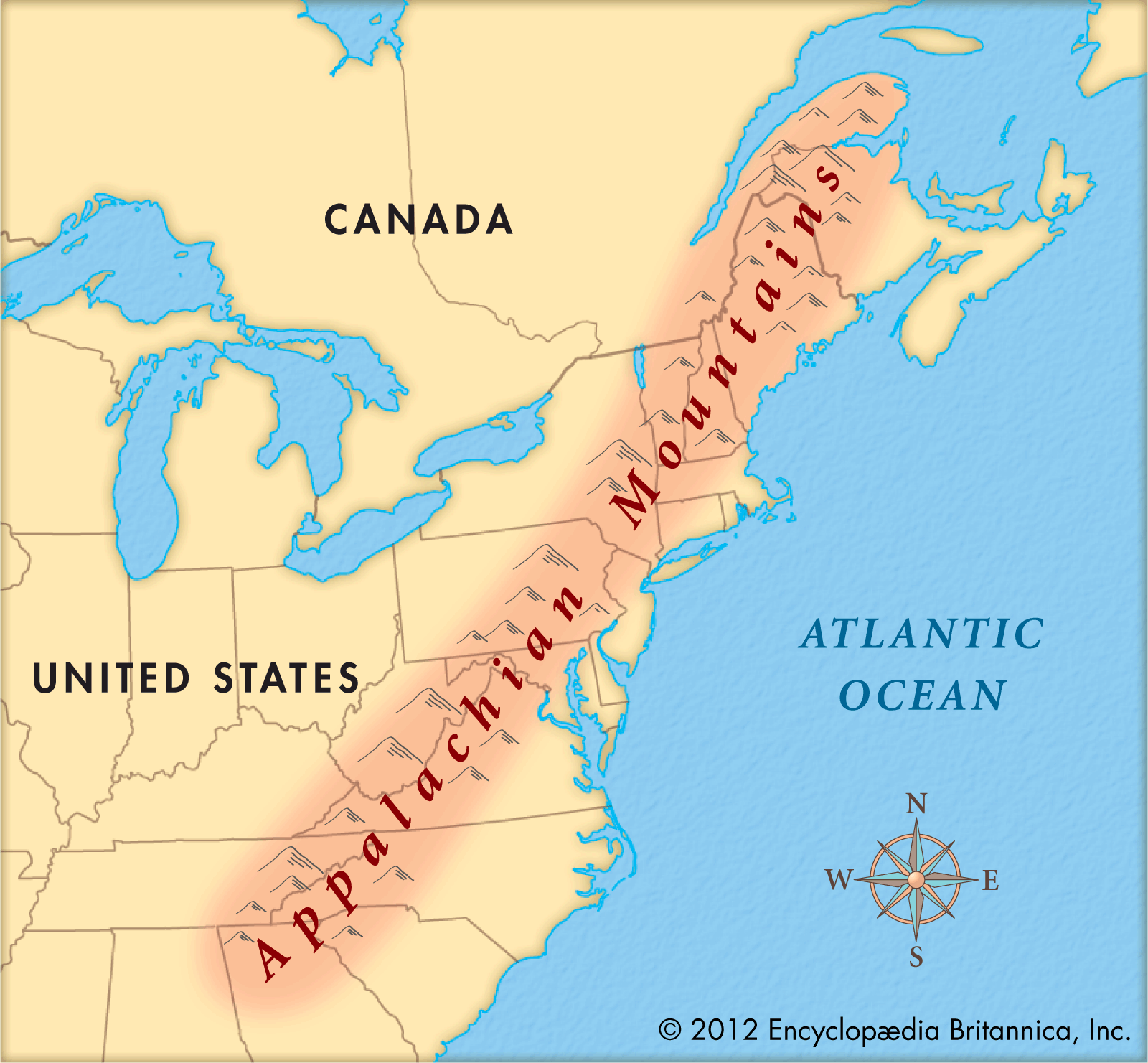The Appalachian Mountains, known for their breathtaking landscapes and rich cultural history, are a must-visit for nature lovers and adventure seekers alike. Understanding the geography and layout of this majestic range is essential for planning your journey. This article will delve into the details of the Appalachians map, its significance, and tips for navigating these iconic mountains.
The Appalachians stretch over 2,000 miles from Canada to Alabama, offering a diverse range of ecosystems, recreational activities, and picturesque vistas. Whether you are interested in hiking, camping, or simply appreciating the natural beauty, the Appalachians have something for everyone. This guide aims to provide you with all the necessary information to explore the region effectively and safely.
In this article, we will discuss the various aspects of the Appalachians map, including its topography, key locations, and how to use it for your outdoor adventures. We will also touch on the historical and cultural significance of the region, ensuring that you have a well-rounded understanding of what the Appalachian Mountains have to offer.
Table of Contents
- 1. Overview of the Appalachian Mountains
- 2. The Importance of the Appalachians Map
- 3. Key Locations on the Appalachians Map
- 4. Navigating the Appalachians
- 5. Outdoor Activities in the Appalachians
- 6. Cultural Significance of the Appalachian Mountains
- 7. Tips for Exploring the Appalachians
- 8. Conclusion and Call to Action
1. Overview of the Appalachian Mountains
The Appalachian Mountains are one of the oldest mountain ranges in North America, with a geologic history that dates back more than 480 million years. This ancient system includes several subranges, such as the Great Smoky Mountains, Blue Ridge Mountains, and Allegheny Mountains, each offering unique landscapes and biodiversity.
The Appalachians are characterized by their rolling hills, deep valleys, and rich forests, which are home to an array of wildlife, including black bears, deer, and various bird species. The region's elevation varies significantly, with the highest peak, Mount Mitchell, reaching an elevation of 6,684 feet.
2. The Importance of the Appalachians Map
The Appalachians map is crucial for anyone looking to explore this vast region effectively. It provides detailed information on trails, elevations, and notable landmarks, making it an essential tool for hikers, campers, and outdoor enthusiasts.
Maps not only help in navigation but also offer insights into the various ecosystems found within the mountains. Understanding the terrain through a well-detailed map can greatly enhance your outdoor experience, ensuring you make the most of your adventure.
2.1 Types of Maps Available
- Topographic Maps: Highlight elevation changes and terrain features.
- Trail Maps: Focus on hiking trails and their difficulty levels.
- Recreational Maps: Include information on campgrounds, parks, and attractions.
3. Key Locations on the Appalachians Map
When exploring the Appalachians, several key locations stand out that are worth visiting. Here are some of the most notable:
3.1 Great Smoky Mountains National Park
This national park straddles the border between North Carolina and Tennessee and is renowned for its biodiversity and stunning views. The park offers over 800 miles of trails, making it a hiker's paradise.
3.2 Blue Ridge Parkway
A scenic highway that runs through the Appalachian Mountains, the Blue Ridge Parkway is famous for its breathtaking vistas and vibrant fall foliage. It connects the Great Smoky Mountains National Park to Shenandoah National Park.
3.3 Shenandoah National Park
Located in Virginia, Shenandoah National Park features over 200,000 acres of protected lands and is known for its beautiful waterfalls and scenic vistas along Skyline Drive.
4. Navigating the Appalachians
To navigate the Appalachians effectively, consider the following tips:
- Carry a physical map as a backup to digital GPS.
- Familiarize yourself with key trail markers and landmarks.
- Download offline maps in case of limited cell service.
5. Outdoor Activities in the Appalachians
The Appalachian Mountains offer a plethora of outdoor activities, catering to various interests and skill levels. Here are some popular options:
5.1 Hiking
With thousands of miles of trails, hiking is one of the most popular activities in the Appalachians. From easy walks to challenging backcountry treks, there’s something for everyone.
5.2 Camping
The region is home to numerous campgrounds, ranging from developed sites with amenities to primitive areas for those seeking solitude in nature.
5.3 Fishing and Hunting
Many rivers and streams in the Appalachians are excellent for fishing, while hunting is also permitted in designated areas during specific seasons.
6. Cultural Significance of the Appalachian Mountains
The Appalachian Mountains are not only known for their natural beauty but also for their rich cultural history. The region is home to a unique blend of Indigenous cultures, early settlers, and a vibrant Appalachian heritage.
Traditional music, crafts, and storytelling are integral to the culture of the Appalachians. Festivals celebrating this heritage can be found throughout the year, offering visitors a glimpse into the region's traditions.
7. Tips for Exploring the Appalachians
To ensure a safe and enjoyable experience in the Appalachian Mountains, consider the following tips:
- Check weather conditions before heading out.
- Wear appropriate footwear and clothing for hiking.
- Stay hydrated and carry enough food for your adventures.
- Inform someone about your itinerary for safety.
8. Conclusion and Call to Action
In conclusion, the Appalachians map is an invaluable resource for anyone looking to explore this stunning mountain range. From its breathtaking landscapes to its rich cultural history, the Appalachian Mountains offer endless opportunities for adventure and discovery. We encourage you to plan your visit and experience the wonders of this remarkable region.
Have you explored the Appalachian Mountains? Share your experiences in the comments below, and don’t forget to check out our other articles for more travel tips and guides!


